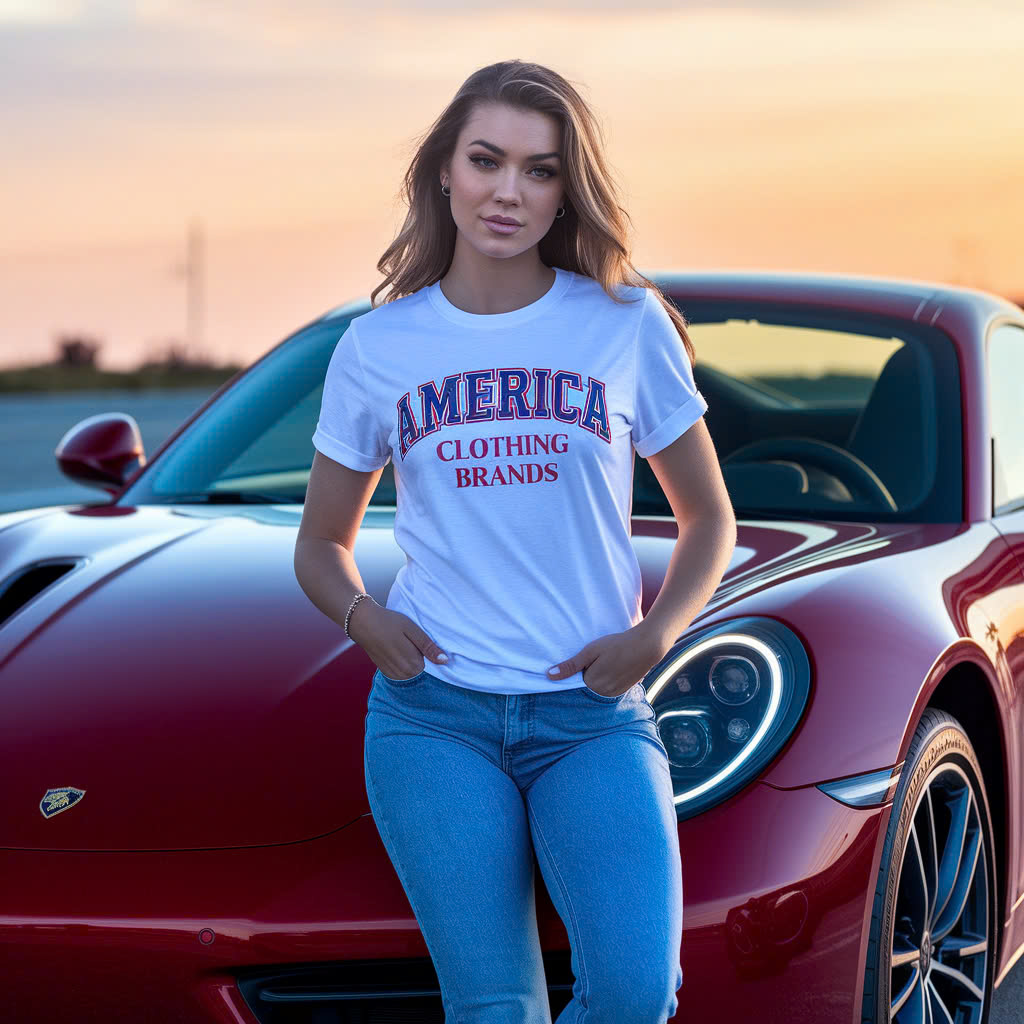T-shirts are arguably one of the most ubiquitous and versatile garments in the world. From humble beginnings as an undergarment to becoming a global fashion staple, the t-shirt has evolved in ways that few could have anticipated. In this article, we delve deep into the history, cultural significance, and the many ways in which the t-shirt continues to shape and reflect society.
The Origins of the T-Shirt
The history of the t-shirt dates back to the late 19th century, when it emerged as a practical undergarment for workers. Initially made from lightweight cotton, the t-shirt was valued for its comfort and breathability. Sailors in the U.S. Navy were among the first to adopt the garment in the early 1900s, wearing it as part of their standard-issue uniforms.
By the 1920s, the t-shirt began to gain wider recognition. It was around this time that the term “t-shirt” was added to the Merriam-Webster dictionary. Despite its growing presence, the t-shirt remained largely confined to the realm of workwear and undergarments until the mid-20th century.
The T-Shirt as a Cultural Icon
The 1950s marked a turning point for the t-shirt, as it transitioned from functional attire to a symbol of rebellion and individuality. Hollywood played a pivotal role in this transformation. Iconic actors like Marlon Brando in A Streetcar Named Desire and James Dean in Rebel Without a Cause wore plain white t-shirts on screen, exuding a rugged, rebellious charm that captivated audiences.
During the same decade, the rise of screen printing technology allowed for the mass production of t-shirts with logos, slogans, and graphics. This innovation paved the way for the t-shirt to become a canvas for self-expression. Bands, political movements, and brands began using t-shirts to convey messages and build identities.
The Evolution of T-Shirt Design
Over the decades, t-shirt designs have evolved to reflect changing societal trends and technological advancements. In the 1960s and 1970s, tie-dye and graphic prints dominated the scene, often associated with the counterculture and hippie movements. These colorful, eye-catching designs were a stark contrast to the plain white t-shirts of earlier years.
The 1980s and 1990s saw the rise of branded t-shirts, as fashion houses and streetwear brands began incorporating them into their collections. Logos and brand names became central to t-shirt designs, turning them into status symbols. This era also witnessed the birth of niche subcultures, each with its own distinct t-shirt aesthetics, from punk rock band tees to hip-hop-inspired oversized shirts.
In recent years, sustainability and inclusivity have become prominent themes in t-shirt design. Many brands now prioritize eco-friendly materials and ethical production methods. Customization has also become increasingly popular, with consumers seeking unique, personalized designs that reflect their identities.
The Role of T-Shirts in Fashion
Despite its simple design, the t-shirt holds a significant place in the world of fashion. It serves as a blank canvas for designers to experiment with colors, patterns, and textures. High-fashion brands like Gucci, Balenciaga, and Off-White have embraced the t-shirt, elevating it to a luxury item with price tags to match.
Streetwear, a fashion genre that blends casual and high-end styles, has further cemented the t-shirt’s status as a fashion staple. Limited-edition drops and collaborations between brands and artists often feature exclusive t-shirt designs, creating a sense of urgency and desirability among consumers.
The T-Shirt as a Medium for Expression
One of the most compelling aspects of the t-shirt is its ability to convey messages. Whether it’s a political slogan, a humorous quip, or an artistic design, t-shirts allow individuals to communicate their beliefs, interests, and personalities without saying a word. This power has made the t-shirt a popular choice for protests, campaigns, and movements.
For example, the “I ❤ NY” t-shirt, designed by Milton Glaser in the 1970s, became an iconic symbol of New York City and its resilient spirit. Similarly, band t-shirts have allowed fans to showcase their musical tastes and allegiance, while charity and awareness campaigns use t-shirts to spread their messages and raise funds.
The Business of T-Shirts
The global t-shirt industry is a multi-billion-dollar market, driven by demand for both basic and designer options. Online platforms like Etsy and Printful have made it easier than ever for entrepreneurs to launch their own t-shirt brands. With minimal upfront costs, aspiring designers can create and sell custom t-shirts to a global audience.
E-commerce has also revolutionized how consumers shop for t-shirts. Subscription services, virtual fitting rooms, and AI-driven recommendations have enhanced the online shopping experience. Social media platforms like Instagram and TikTok play a crucial role in marketing, enabling brands to reach and engage with their target audiences effectively.
Sustainability Challenges and Innovations
As the fashion industry faces increasing scrutiny over its environmental impact, the t-shirt sector has come under the spotlight. Cotton farming, which is a primary source of material for t-shirts, requires significant water and pesticide use. Additionally, the production and disposal of synthetic fibers contribute to pollution and waste.
In response, many brands are adopting sustainable practices, such as using organic cotton, recycled materials, and biodegradable dyes. Initiatives like circular fashion, where old t-shirts are repurposed or recycled into new garments, are gaining traction. Consumer awareness is also driving demand for eco-friendly options, encouraging companies to prioritize sustainability.
T-Shirts in Pop Culture
T-shirts have a unique ability to capture moments in pop culture. From the iconic “Frankie Says Relax” tees of the 1980s to the viral “Supreme Box Logo” shirts of today, these garments often become cultural artifacts. Celebrities and influencers play a significant role in popularizing t-shirt trends, turning simple designs into global phenomena.
The rise of memes and internet culture has also influenced t-shirt designs. Memorable quotes, images, and jokes often find their way onto t-shirts, allowing people to wear humor and shareable content. This trend highlights the t-shirt’s adaptability and relevance in the digital age.
The Social and Psychological Impact of T-Shirts
T-shirts often play a subtle but significant role in shaping human interaction. A t-shirt bearing a particular logo, slogan, or design can act as a conversation starter, allowing individuals to connect over shared interests. For example, a band tee might attract fellow fans, while a charity event shirt can signal support for a common cause.
Psychologically, wearing a t-shirt that resonates with an individual’s personality can boost confidence. The simplicity and comfort of a t-shirt also foster a sense of approachability and ease. In this way, t-shirts transcend their practical function to become tools for communication and personal empowerment.
Beyond personal expression, t-shirts can also unite groups of people. Whether through uniforms, team gear, or event merchandise, the t-shirt has a unique ability to foster a sense of community and belonging. For instance, participants in a charity walk wearing identical t-shirts not only showcase their collective commitment but also create a memorable visual impact.
The Future of T-Shirts
As technology continues to advance, the future of t-shirts looks promising. Innovations such as smart textiles, which incorporate sensors and electronic components, could transform the humble t-shirt into a multifunctional garment. Imagine a t-shirt that monitors your health, changes color based on temperature, or connects to your smartphone—the possibilities are endless.
Customization is also likely to remain a key trend. With 3D printing and on-demand manufacturing, consumers can create one-of-a-kind t-shirts tailored to their preferences. Augmented reality (AR) and virtual reality (VR) technologies could further enhance the design and shopping experience, allowing customers to visualize and interact with t-shirts before making a purchase.
Incorporating blockchain technology for transparency in supply chains could become another significant development. By scanning a QR code on a t-shirt, consumers might one day access information about the garment’s production process, ensuring ethical and sustainable practices. Such innovations reflect a growing demand for accountability in the fashion industry.
Conclusion
The t-shirt is more than just a piece of clothing; it’s a cultural phenomenon that transcends boundaries of age, gender, and geography. Its simplicity, versatility, and ability to adapt to changing trends have ensured its place as a wardrobe staple for over a century. Whether as a fashion statement, a medium for expression, or a practical garment, the t-shirt continues to inspire and connect people around the world. As we look to the future, one thing is certain: the t-shirt’s story is far from over. With sustainability, technology, and creativity driving its evolution, the humble t-shirt is poised to remain an indispensable part of human culture for generations to come.

